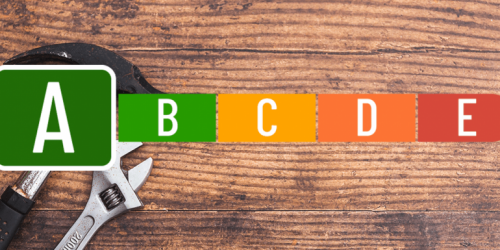How is digitalisation reinventing the purchasing function?

Part 1: The Digitalisation of Purchasing
After the mechanical, electrical and electronic revolutions, we are at the dawn of the 4th industrial revolution. New technologies or cyber-systems are at the heart of this unavoidable transformation (Big Data, Artificial Intelligence, Blockchain, the Internet of Things, etc.) which will impact every profession, including that of the purchaser. A future is fast approaching in which new technologies will take over certain low value-added tasks that have, until now, been done by people.
This first section on the digitalisation of purchasing is organised into three parts:
- The path to process automation (anchor)
- The main disruptive technologies (anchor)
- The obstacles to effective purchasing digitalisation (anchor)
The route to automated processes
Today, purchasing teams still carry out many low-value tasks. Their working day is made up of as many operational tasks as strategic ones. However, some of these operational tasks could be entrusted to new technologies, with the benefit of an improvement in the cost/efficiency ratio.
If we map the entire purchasing cycle, from the development of the purchasing strategy to payment and the analysis of costs, it is estimated that nearly 40% of the tasks could be automated, according to a study by McKinsey & Company. This potential for automation is especially high for the Procure-to-Pay (P2P) process, with payment and invoicing at the top of the list.
As operational tasks are both the most time-consuming and the least value-creating for purchasing teams, automation represents a formidable lever with which to improve efficiency. According to the recently published “Deloitte 2021 Global Chief Procurement Officer Survey”, more than 30% of purchasing departments have already implemented automation and tools to improve their agility and to manage the volatility of their workload more efficiently.
The main disruptive technologies
New technologies are constantly being developed and extending their field of application. Five main solutions are expected to play a major role in the digital transformation of purchasing.
Digitalisation
The first solutions for the digitalisation of the Source-to-Contract and Procure-to-Pay processes appeared in the 2000s, with electronic catalogues and e-procurement, for example. Companies have become familiar with these tools and are now relatively skilled at using them. Today, purchasing departments have digitalised most of their lower value-added processes such as payments or purchase requests. Now, the challenge for companies is to continue this process of digitalisation in order to dematerialise all their transactional and logistics processes.
The automation of robotic processes
This technology, also called Robotic Process Automation, is the automated execution of a series of pre-programmed actions, following precisely defined rules. This solution can be used to automate repetitive, low value-added tasks that have, until now, been done by purchasing teams, such as processing invoices and validating purchase requests. Widely acclaimed, Robotic Process Automation is already used by 17% of purchasing departments, according to the Deloitte report.
Artificial Intelligence
Through the analysis of large amounts of data, whether structured or not, Artificial Intelligence can facilitate, or even stimulate, decision-making. The interest of purchasing decision-makers in this technology is growing: today, nearly 5% of them use it and 15% are currently testing it, according to the Deloitte study.
Blockchain
Blockchain stores and transmits information securely and transparently for all parties involved, with no central control body. Currently used by only 2% of purchasing departments, according to Deloitte, this technology is still not very widespread in companies, even if more and more of them are taking an interest in it. Often compared to a ledger of virtual accounts, the blockchain could help certify supplier contracts, secure supplies, or even ensure the transparency of tenders.
The internet of things (IoT)
Connected objects, equipment, or services collect and transmit data on the user or on their environment. These solutions, based on network connectivity, can be particularly useful for stock management or supply monitoring.
Although their implementation is gradual and depends on the specific needs of each company, these technologies will ultimately automate the purchasing process, improve operational efficiency and, above all, save purchasing teams a considerable amount of time.
Obstacles to the digitalisation of purchasing
Purchasing departments are well aware of the potential represented by these new technologies and wish to move in this direction. However, they face three major obstacles to implementing them.
1. The quality of data
According to IDC, last year the volume of data created and replicated worldwide hit a record high of 64.2 zettabytes. By 2025, this phenomenon is expected to experience an average annual growth rate of 23%. It is an explosion in the volume of data, and especially its quality, that will be the main challenge for purchasing departments. Once the data has been collected, it may turn out to be incorrect, non-exhaustive, or non-standardised. The added value of the technologies used can only be realised if the data is of sufficiently high quality.
2. The lack of integration
The applications and IT tools that companies use today can impose limits in the application of new technologies, mainly in terms of integration.
3. The budget allocated
Companies often lack the budget or funding necessary to implement this type of technology. This is why it is necessary to prioritise and plan their budget according to the return on investment.
The digitalisation of purchasing, boosted by the development of new technologies, is proving to be a formidable performance lever for purchasing departments. The prospects are encouraging: higher value-added tasks, more strategic roles, and more fulfilled teams.
To find out how to integrate CSR into the heart of your company’s purchasing policy, download our white paper.
For more information please visit us: www.manutan.co.uk/future-of-work




